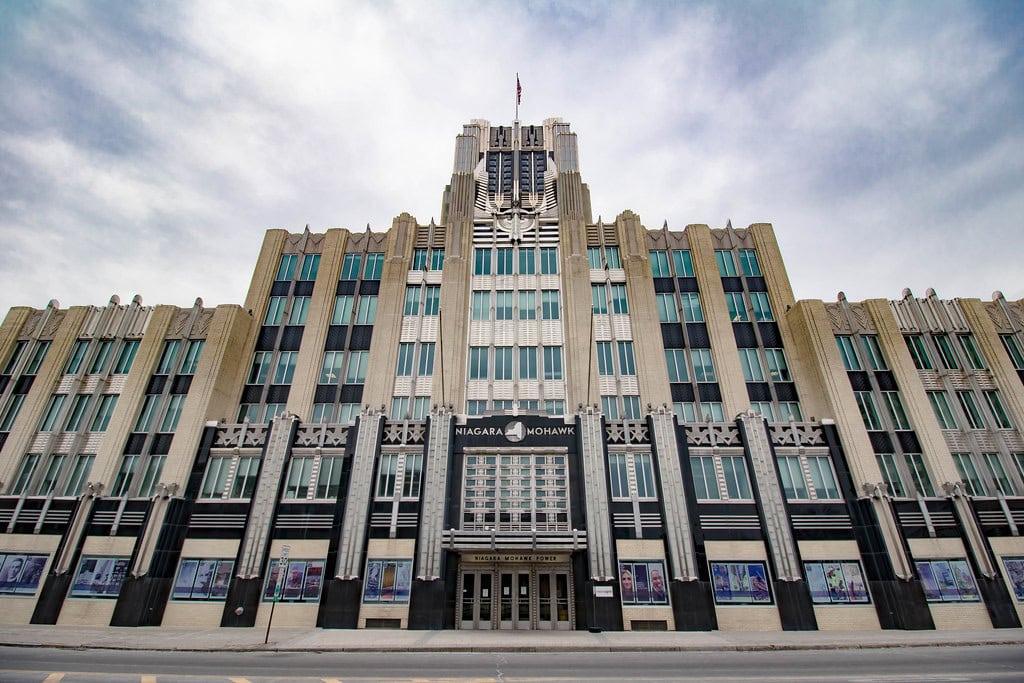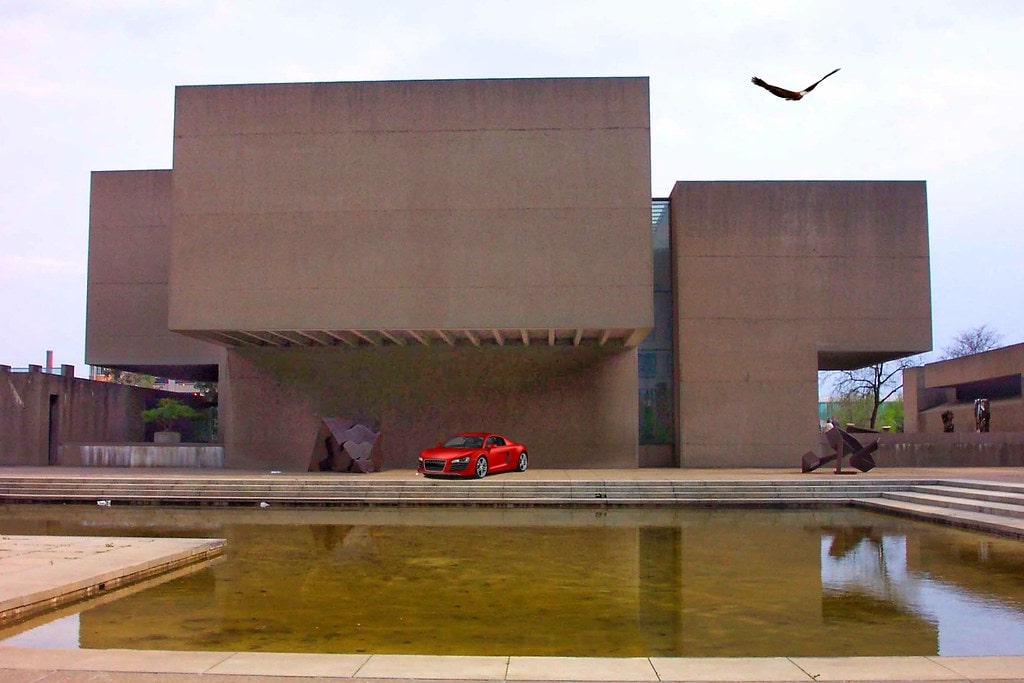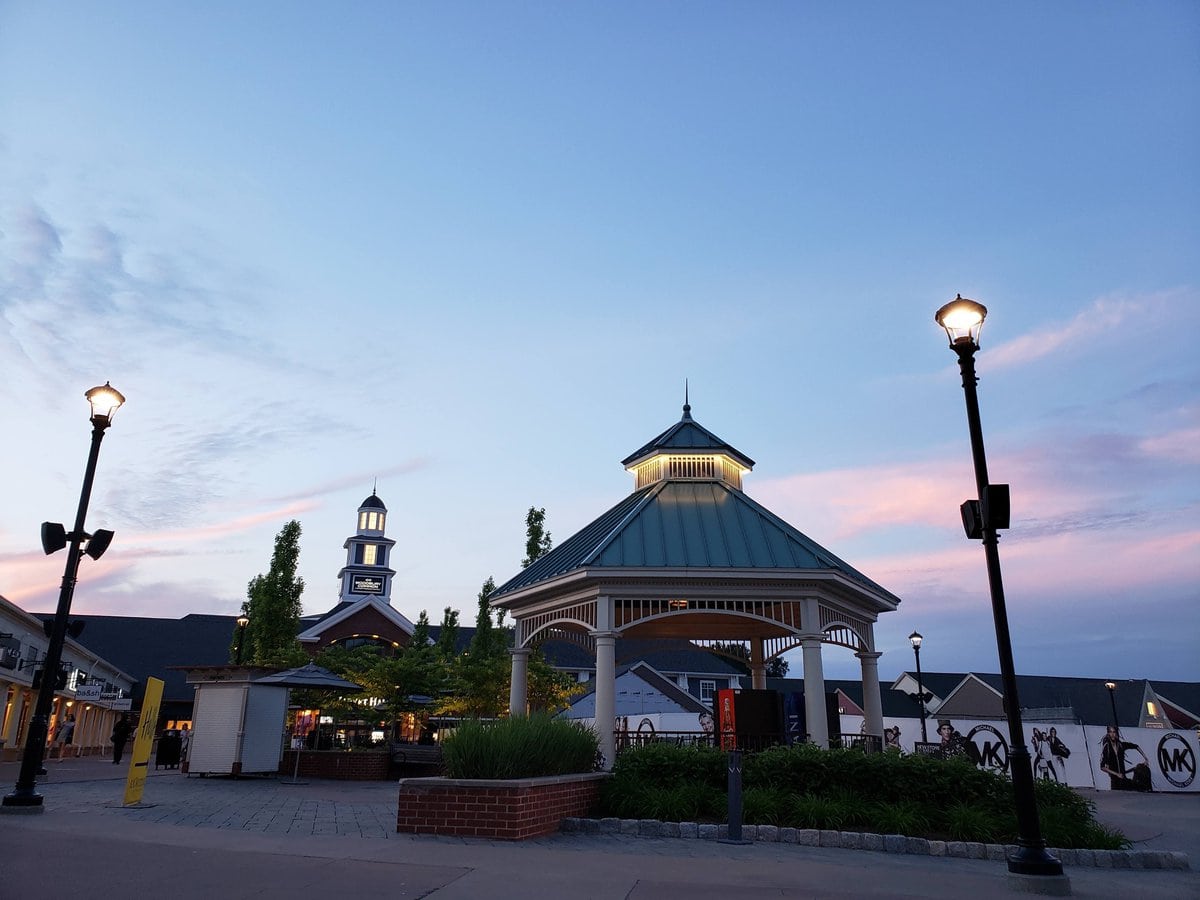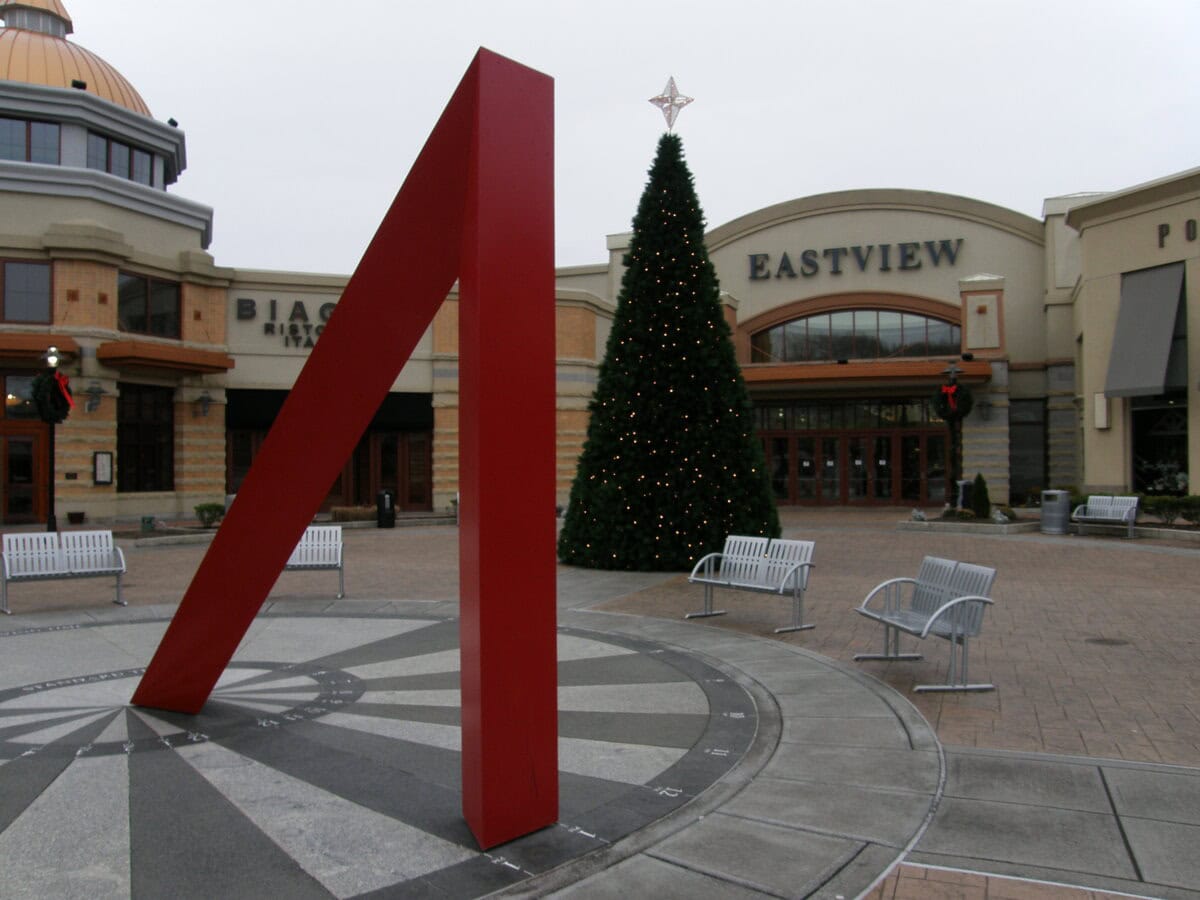
A snow city with record winters
Located just south of Lake Ontario, Syracuse ranks among America's snowiest big cities, averaging about 128 inches of snow each year.
Most of it comes from lake-effect bands that form when cold air crosses the lake's open water, producing narrow, intense squalls that can drop several inches per hour.
The city's record winter came in 1992–93 with 192.1 inches, and the March 1993 "Storm of the Century" brought more than 40 inches in two days.
Locals track totals through the friendly Golden Snowball competition with nearby upstate cities.
Snow usually falls in steady bursts from November through April, shaping Syracuse's calendar, architecture, and street systems around long, reliable winters.
The traffic light that puts green on top
At the corner of Tompkins Street and Milton Avenue in the Tipperary Hill neighborhood, Syracuse installed a green-on-top traffic signal in the late 1920s to answer repeated complaints from Irish immigrants about red appearing above green.
The unusual lens order was set to calm tensions and keep the light standing, and it has remained that way ever since.
The signal is part of a small memorial park that opened in 1997 and includes bronze figures pointing toward the inverted light.
City maps and neighborhood guides still list the intersection as a minor landmark, and drivers approach it the way they would any other light, stopping at red despite the reversed sequence.
A mall bigger than many downtowns
Destiny USA, opened as Carousel Center on October 15, 1990, has expanded into a six-level complex with about 2.4 million square feet of gross leasable area.
It is the largest shopping center in New York and consistently ranks among the country's biggest by floor area, drawing tens of millions of visits annually.
The site sits along the city's Inner Harbor at 1 Destiny USA Dr., where oil tanks and scrap operations once stood.
The 2012 expansion achieved LEED Gold certification, and the property mixes traditional retail with outlet wings and indoor attractions.
The vintage carousel that gave the original mall its name still operates inside.
The last Erie Canal weighlock stands downtown
Syracuse's Erie Canal Museum occupies the 1850 Weighlock Building, the only surviving canal weighlock in the United States.
Canal boats once floated directly into this lock from what is now Erie Boulevard East to be weighed so tolls could be assessed, a system that helped support maintenance of the canal.
The building continued in state use after tolls ended in 1883, then became a museum in 1962.
Its galleries preserve the structure's scale chamber and toll office, and the exterior still follows the canal's former line through downtown.
The museum anchors walking routes that trace where packet boats once crossed Montgomery Street and turned toward Clinton Square.

A campus stadium built for winter crowds
Opened in 1980, Syracuse University's domed stadium, now called the JMA Wireless Dome, was long known for its air-supported roof and for drawing some of the largest on-campus basketball crowds in the nation.
The roof was replaced by a fixed system during renovations completed in 2020–2022, adding new lighting and sound.
The building regularly hosts football, basketball, and lacrosse, along with concerts.
A record basketball crowd of 35,642 attended Syracuse vs. Duke on February 23, 2019, setting an NCAA on-campus mark at the time.
The location on University Hill lets fans walk from the academic core, and the enclosed fieldhouse keeps late-autumn schedules intact.
A rescue that defied a federal law
On October 1, 1851, Syracuse residents freed William "Jerry" Henry from custody downtown, an event remembered as the Jerry Rescue.
Marshals had arrested Henry under the 1850 Fugitive Slave Law and brought him to an office near Clinton Square for a hearing.
That evening, a crowd forced the door and removed him, then moved him among safe houses before he left the city.
The episode drew national attention and is marked by a monument in the square.
The city's abolitionist network, including church leaders and members of a vigilance committee, documented the rescue in speeches and pamphlets, and the date remains part of the local civic calendar.
Syracuse once ruled pro basketball
The Syracuse Nationals won the 1955 NBA championship, beating Fort Wayne 92–91 in Game 7 at the Onondaga War Memorial on April 10, 1955.
The franchise later moved to Philadelphia in 1963 and became the 76ers, but the title and early NBA history remain tied to Syracuse box scores, photographs, and arena records.
Local innovator Danny Biasone, the team's owner, is widely credited with adopting the 24-second shot clock that sped up the professional game.
The War Memorial, now the Upstate Medical University Arena, still hosts college and minor-league events, and archival exhibits in the city reference the Nationals' championship run.
An Art Deco power palace with a shining figure
Completed in 1932 at 300 Erie Blvd W., the former Niagara Mohawk Building features a 28-foot stainless-steel "Spirit of Light" figure over its entrance and bands of accent lighting meant to celebrate the electrification era.
The seven-story headquarters was designed in an assertive Art Deco style, and restored lighting has highlighted its vertical lines at night.
After utilities merged, the building became a National Grid office complex and was listed on the National Register of Historic Places in 2010.
The structure still anchors the west side of downtown and faces a stretch of Erie Boulevard that follows the filled-in canal route.

A Pei museum that puts ceramics at the center
The Everson Museum of Art opened its I. M. Pei building in 1968, a concrete-and-cube composition at 401 Harrison Street that set the tone for the museum's modern program.
The Everson has emphasized American ceramics for decades and holds one of the most extensive collections of U.S. ceramic art.
The museum has also presented early programs in film and video, aligning exhibitions with its purpose-built theaters and galleries.
Its galleries regularly rotate works from the permanent collection along with traveling shows that focus on living artists and regional histories.
A single tree that bears forty fruits
On the Syracuse University Quad near Hinds Hall, artist and professor Sam Van Aken planted a Tree of 40 Fruit, created by grafting branches from dozens of heirloom stone fruit varieties onto one rootstock.
The tree blooms in varied pink and white blossoms in spring and ripens different plums, cherries, apricots, peaches, and nectarines from midsummer into fall.
Van Aken began the project in 2008 and has planted versions at museums and campuses nationwide, using a nursery adjacent to the Comstock Art Facility to develop stock.
The campus planting functions as public art and a living archive of regional fruit cultivars.
A dish invented by workers on the brine blocks
Salt potatoes emerged in Syracuse's 19th-century salt industry, where workers boiled small, unpeeled potatoes in concentrated brine during lunch.
The dish became a regional staple and, by the mid-20th century, local producer Hinerwadel's packaged the mix for home cooks.
Modern recipes still use a dense salt-to-water ratio to mimic brine.
The connection links the area's salt springs and state-run works to a food that shows up at clambakes and cookouts.
Grocery shelves across Central New York stock bagged kits with potatoes and salt labeled for quick preparation.
China that set a standard for restaurants
Founded in 1871 as the Onondaga Pottery Company, the firm later known as Syracuse China turned the city into a center of American ceramic production.
By 1896, it was producing the nation's first fully vitrified fine china, a hard, nonporous material that resisted chipping and staining.
The company supplied restaurants, hotels, and railroads across the country, and its backstamps became a quiet sign of quality on countless tables.
Generations of local workers designed and fired patterns for institutions and carriers, from dining cars to ocean liners.
After more than 130 years of continuous operation, production moved out of Syracuse, and the city plant closed in 2009, ending a landmark chapter in industrial craft.

Where boats once tied up, skaters glide
Clinton Square was once a canal basin on the Erie Canal, with packet boats docking beside hotels and markets.
The canal through downtown closed in 1917 and was filled to create Erie Boulevard by the mid-1920s.
In the late 20th century, the square shifted from traffic to festivals, and a reflecting pool and large fountain were added in 2001.
An ice rink has operated seasonally since the 1990s.
Markers and monuments in the square commemorate the canal era and events like the Jerry Rescue, while the basin's outline guides the placement of the pool to recall the waterway's former path.









